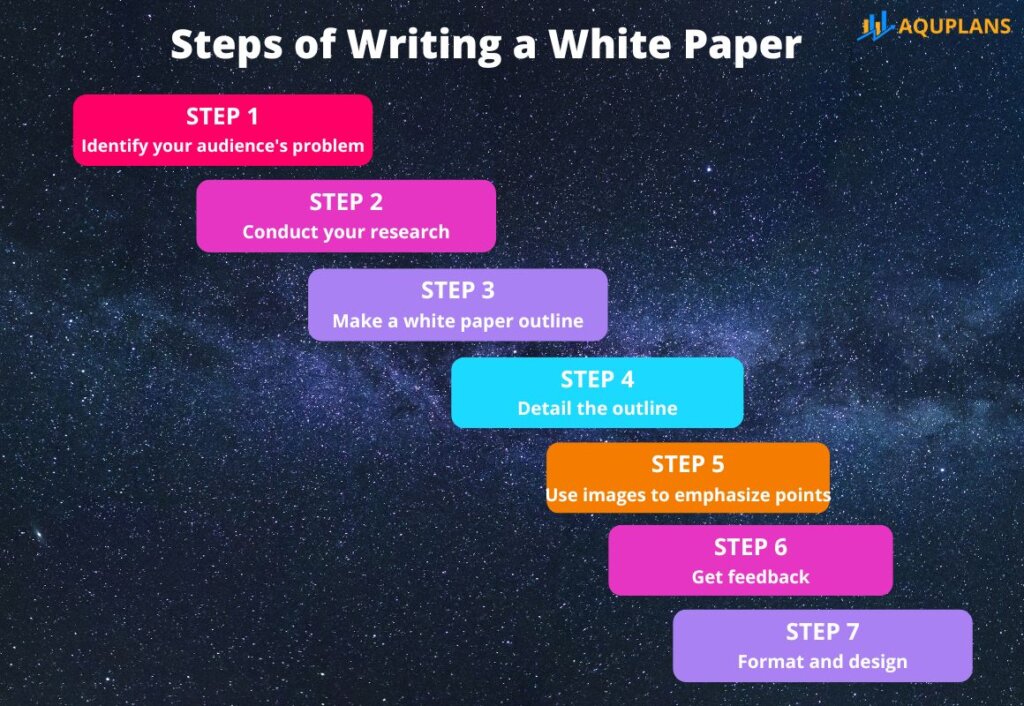What is a White Paper?
October 11, 2024 · 6 min read

A white paper is a comprehensive, persuasive, and authoritative guide or report that provides in-depth information into a certain issue, an author or an organization’s insight into a topic and offers potential solutions.
You may be asking, “why is it called a white paper?” The term came up when government papers were coded by color to show distribution, with white representing public access.
A white paper is characterized by its convincing intent, formal tone, and data-driven approach. It uses statistics, research, professional opinions, and an analytical approach to promote a service or a product. Traditionally, white papers were used in government policy-making to present proposals by the parliament but have progressed into an important tool in various domains, including technical, research, and marketing.
As a technical tool, a white paper is used to show in detail complex processes, offer a foundation for decision-making, and aid professionals to understand and offer specific solutions. In research, a white paper is used in the exploration of a theoretical framework, contributing to knowledge advancement, and synthesizing significant findings.
From a marketing perspective, a white paper is used to generate sales leads, nurture leads, build credibility, and position an organization as an expert in the industry. Marketers generate white papers to teach or persuade their target audiences about a certain product or service, and clarify a specific methodology.
What is the purpose of a white paper?
The main purpose of a white paper is to persuade and educate stakeholders, clients, and prospective customers by offering in-depth information and well-thought arguments about a specific topic or product. It helps its readers to understand and provide solutions to specific problems.
White papers are used to establish thought-leadership and credibility of the organization or author to the readers, which helps to enrich its influence and reputation within a specific field or industry.
A white paper can communicate an organization’s idea or give data-backed research findings and recommendations about a particular industry. This helps organizations and authors to make informed decisions and drive desired actions.
White papers are used for marketing purposes. It helps to generate sales leads, drive engagement, and nurture leads by offering in-depth information and solutions to customer’s problems. A white paper is a powerful tool for education, strategic influence, communication, and marketing.
White Papers Examples
White papers exist in three main types: backgrounders, numbered lists, and problem solution white papers.
Backgrounders offer detailed and simplified technical information about a service or product which helps its target audience to understand its benefits and features.
Numbered lists papers highlight the points or steps about a particular topic in a concise and clear format thus simplifying complex information.
Problem solution papers highlight a specific issue and provide a well-researched solution. The existence of diverse types of white papers often allows organizations to effectively cater to the different needs of their target audience.
The following are examples of white papers:
Marketing White Paper: Marketing white papers are in-depth and authoritative guides or reports used to persuade or educate clients and viable customers about a product or service.
Technical White papers: Technical white papers are detailed documents that provide in-depth technical analyses of a product, service or technology and offer a technology-based answer to the problem.
Leadership White Papers: Leadership white papers are in-depth documents that provide theories, authoritative insights, leadership concepts, or best practices. They focus on contemporary issues, explaining them in a way that enlightens the target audience.
Problem Solution white papers
Problem Solution white papers are documents that identify precise challenges or problems of the target audience and propose a well-researched solution. They are written to inform and persuade stakeholders or technical experts.
Education White Papers: Education white papers are research-based reports that explore innovation, problems, and trends within the education sector. These papers are grounded in factual evidence and present in-depth data analysis, research, expert insights, and recommendations.
Visionary White Papers: Visionary White Papers are progressive documents that outline an organization’s insightful thinking to readers.
Cryptocurrency White Papers: Crypto currency white papers are comprehensive documents that summarizes important data on a block chain or cryptocurrency project.
Elements of a White Paper
Elements of a white paper are the essential components found in every paper that provide a structure and deliver the paper’s information effectively. A white paper typically contains several elements, such as a title page, executive summary, introduction, problem statement, background information, recommendation or solution, conclusion, and a call to action.
A title page contains the topic covered in the white paper and should be attention-grabbing, highlighting the problem that will be solved on the paper. The executive summary should contain an overview of the whole document, allowing readers to get an immediate understanding of the entire document.
The introduction introduces the topic by defining the problem or opportunity and outlining the paper’s purpose. The problem statement educates the reader about the issue being addressed. The background information contains supporting research, expert insights, and data analysis.
The recommendations section presents the proposed solution to the problem raised, this is often supported by rationale and evidence. The conclusion then summarizes the key findings while a call to action calls upon readers to take key actions such as exploring further research.
Steps to Writing a White Paper
Writing a white paper is a thorough process involving several critical steps. The process of writing a white paper is a core subject and everything in it is vital. Writing a white paper follows a specific format.
The following is a table showing the steps followed when creating a white paper.

Identify your audience’s problem: Understand the key challenges or issues your target audience is facing to tailor the white paper’s content effectively.
Conduct your research: Gather detailed information and credible data from reliable sources to support your argument or solution.
Make a white paper outline: Create a structured framework to organize your ideas and flow of content logically.
Detail the outline: Expand on each section of the outline by adding thorough explanations, data, and key points.
Use images to emphasize points: Include relevant visuals like charts, graphs, and infographics to clarify complex ideas and strengthen your arguments.
Get feedback: Seek input from peers or experts to ensure the white paper is clear, accurate, and persuasive.
Format and design: Apply consistent formatting, style, and design elements to enhance readability and professionalism.


